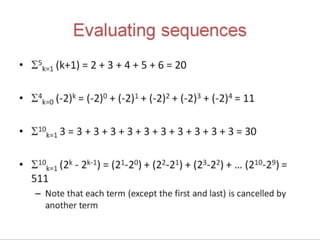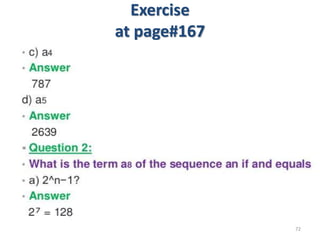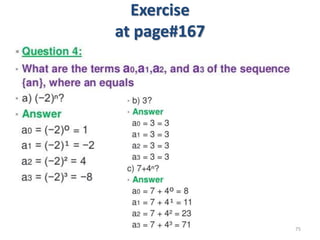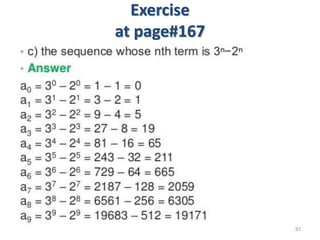The document discusses sequences and summations. It provides examples and definitions of different types of sequences such as arithmetic and geometric sequences. It also discusses recurrence relations, which express a term in a sequence based on prior terms. Examples are provided to demonstrate finding terms of sequences given a recurrence relation. The document is a lecture on discrete mathematics concepts related to sequences.
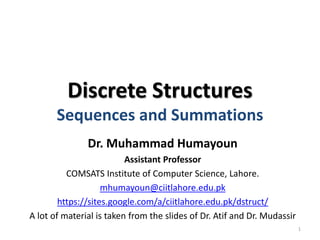

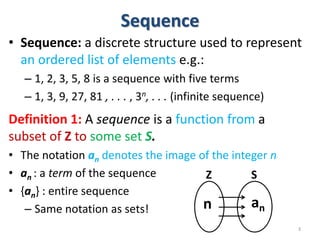
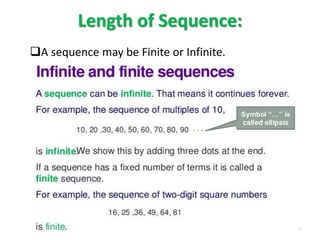


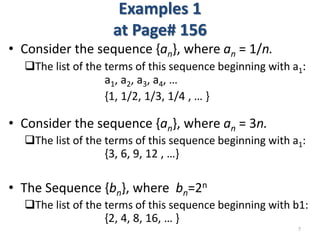
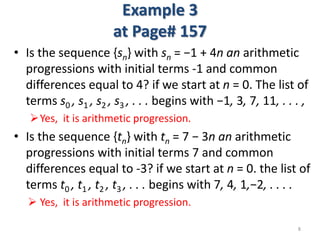





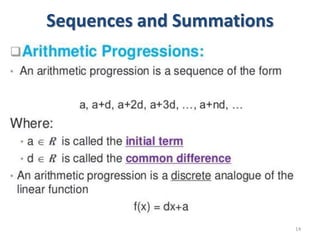





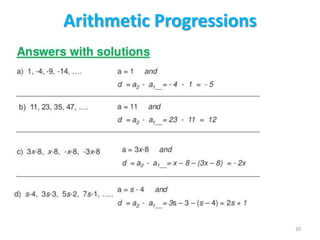











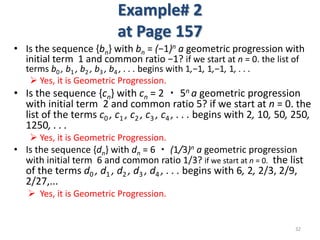


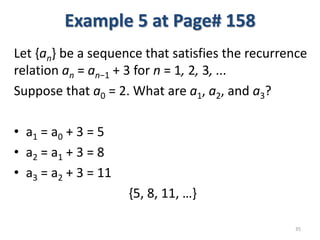




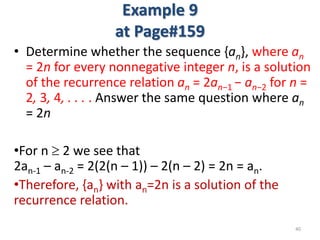


![Example 10 at Page# 159
Not Included
Solve the recurrence relation and initial condition in Example 5.
Let {an} be a sequence that satisfies the recurrence relation an = an−1 + 3 for n =
1, 2, 3, ... Suppose that a0 = 2. What are a1, a2, and a3?
• a1 = a0 + 3 = 5 a1 = 2 + 3 = 5 a1 = 2 + 3 = 2 + 3 .1
• a2 = a1 + 3 = 8 a2 = 5 + 3 = 8 a2 = (2 + 3 ) + 3 = 2+3.2
• a3 = a2 + 3 = 11 a3 = 8 + 3 = 11 a3 = [(2 + 3 ) + 3] + 3 = 2+3.3
• ...
• an = an−1 + 3 = 2 + 3(n − 1).
43](https://image.slidesharecdn.com/10-sequencesandsummation-230130153845-c24f11e1/85/10-Sequences-and-summation-pptx-43-320.jpg)



















